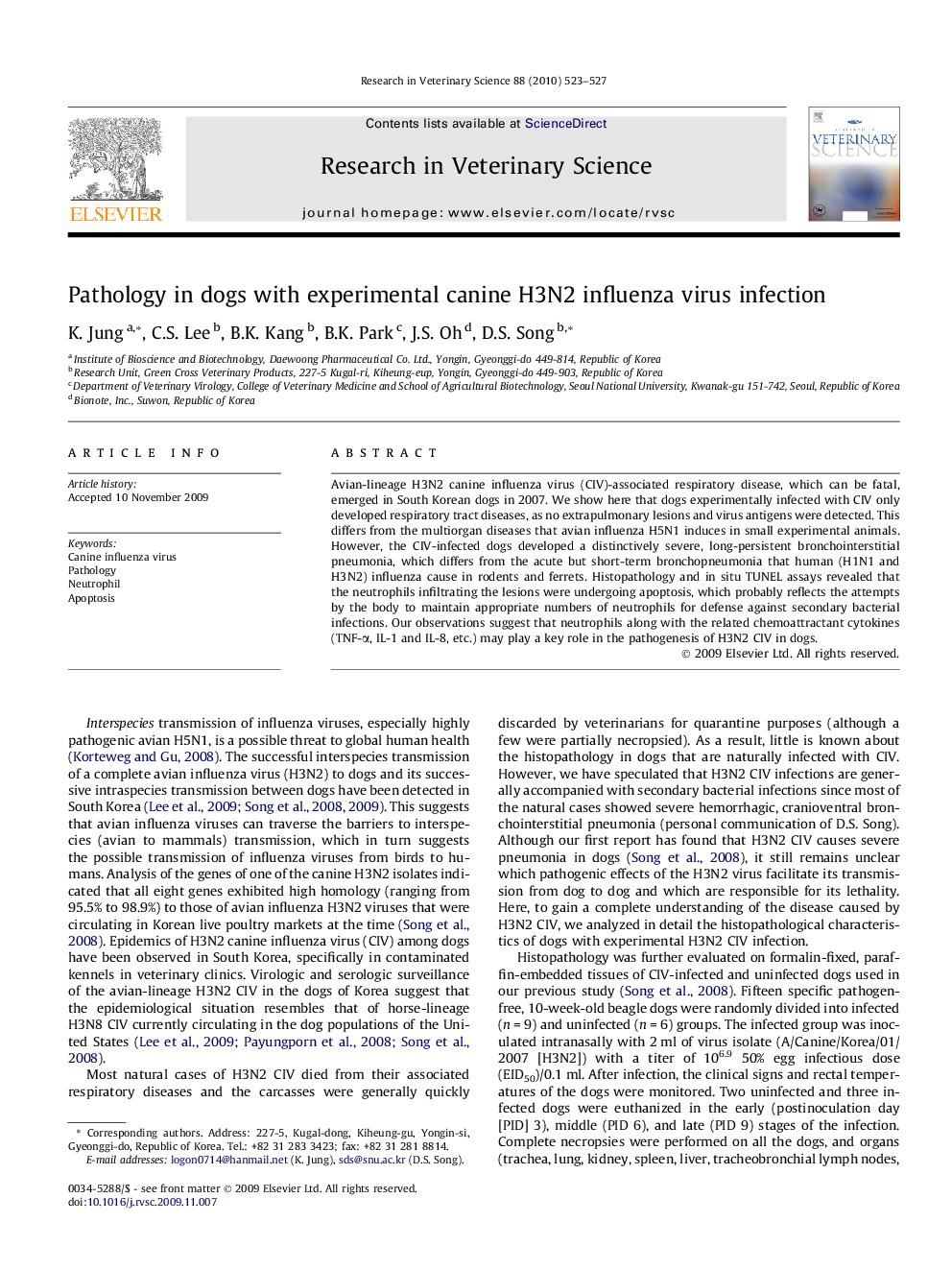| Article ID | Journal | Published Year | Pages | File Type |
|---|---|---|---|---|
| 2455798 | Research in Veterinary Science | 2010 | 5 Pages |
Avian-lineage H3N2 canine influenza virus (CIV)-associated respiratory disease, which can be fatal, emerged in South Korean dogs in 2007. We show here that dogs experimentally infected with CIV only developed respiratory tract diseases, as no extrapulmonary lesions and virus antigens were detected. This differs from the multiorgan diseases that avian influenza H5N1 induces in small experimental animals. However, the CIV-infected dogs developed a distinctively severe, long-persistent bronchointerstitial pneumonia, which differs from the acute but short-term bronchopneumonia that human (H1N1 and H3N2) influenza cause in rodents and ferrets. Histopathology and in situ TUNEL assays revealed that the neutrophils infiltrating the lesions were undergoing apoptosis, which probably reflects the attempts by the body to maintain appropriate numbers of neutrophils for defense against secondary bacterial infections. Our observations suggest that neutrophils along with the related chemoattractant cytokines (TNF-α, IL-1 and IL-8, etc.) may play a key role in the pathogenesis of H3N2 CIV in dogs.
